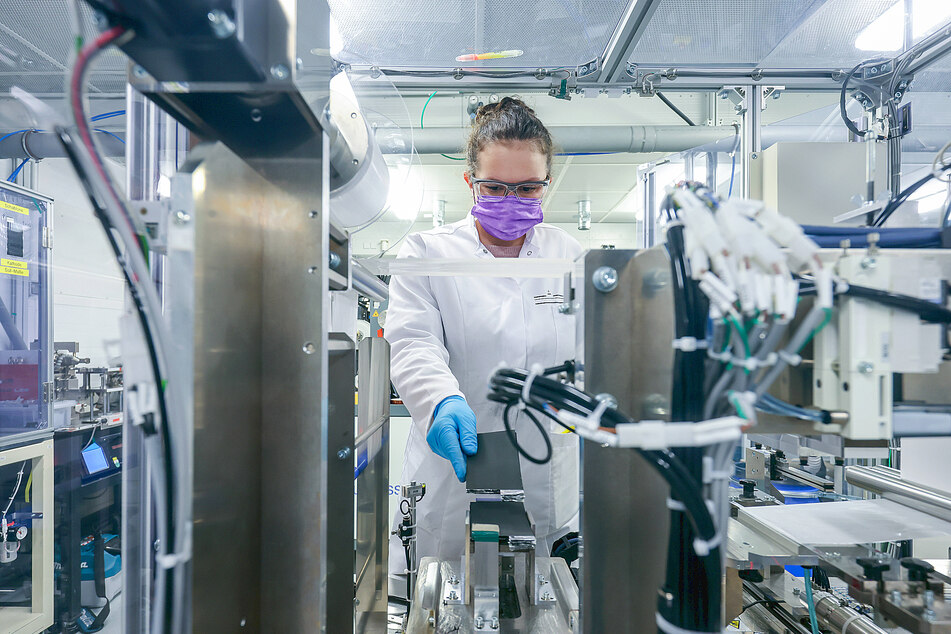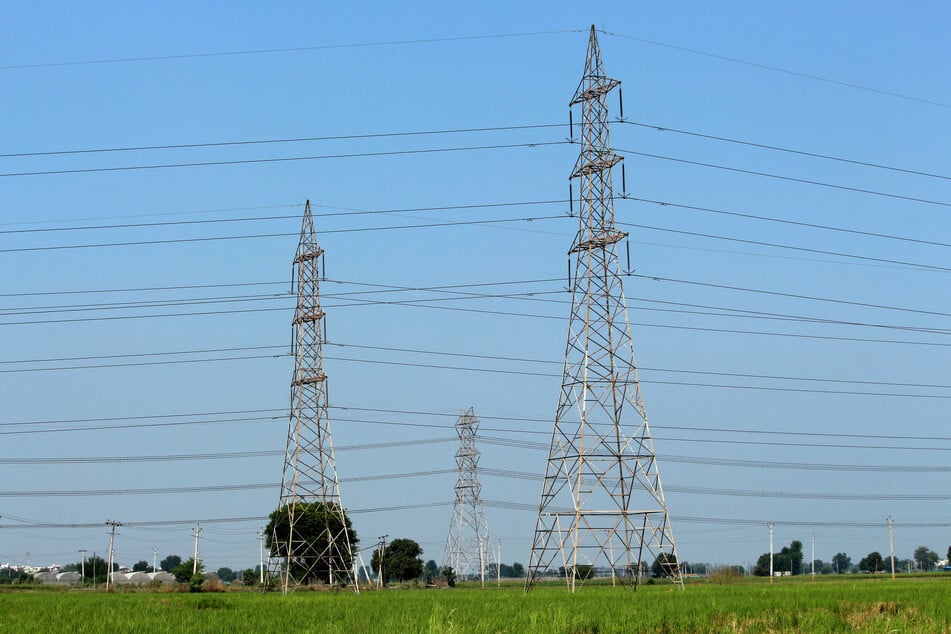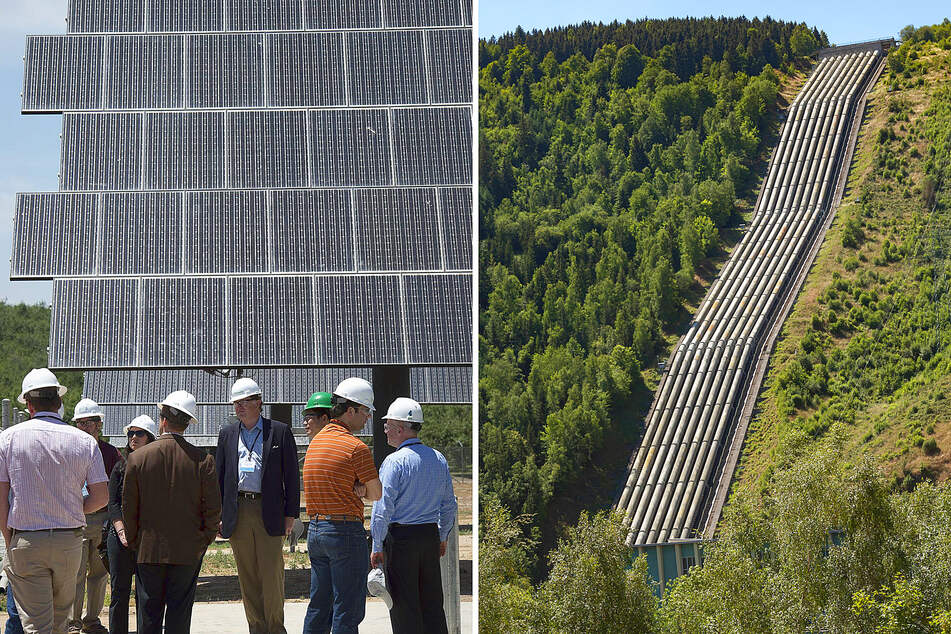Storage is a missing piece of the renewable energy puzzle
Washington DC - How can renewable energy be harnessed, especially on days when the wind isn't blowing or the sun isn't shining? The grid that stores the energy needs a huge upgrade to help the US move its energy mix away from fossil fuels.

Without storing energy, wind and solar energy are not reliable or plentiful enough to provide for all of the US' electricity demand 100% of the time.
This is where containing energy in the power grid comes in.
Since wind and solar power are not "dispatchable" – they can't simply be turned on by the wind or solar farm owner – they are not as reliable without storage as dirty sources, like gas or coal.
So how do you reliably get renewable power through the country's electricity grids and into your home and devices?
The power grid must store the excess electricity generated on windy and sunny days, and then use the reserved power to bridge the gap – when the sun isn't up or the wind doesn't blow.
Even hydropower can benefit from more ways to store its energy production – especially when it runs into problems during megadroughts, like the one that has recently parched the Southwest.
If renewable energy production continues to expand, the new solar farms, wind parks, and hydro sources need to be paired with ample storage to guarantee a stable amount of electricity – even on windless evenings, cloudy mornings, and dry spells.
By the numbers: A greater number of renewable energy is needed

If companies were to swap out all fossil fuels and nuclear power to use only renewable sources, they would need to generate a much larger amount of electricity to meet demand, and find some place to contain it.
Taking one recent day in the US as an example, peak energy demand reached 443,000 MWh at 8:00 AM, based on the US Energy Information Administration's grid overview.
Renewable energy accounted for less than a quarter of the electricity produced to meet that demand, using 39,950 MWh of wind, 14,824 MWh of solar, and 31,719 MWh of hydropower.
Yet, nuclear power generated as much electricity as all the renewables combined at 87,000 MWh. Coal accounted for 25% of the total generation, while natural gas eclipsed all others with 50% of the total generated electricity at 228,988 MWh.
Putting the numbers together, a staggering addition of at least 350,000 MW would be needed from renewables to keep up with demand. That's 170% more renewable energy production needed.
Bridging the gap between days with lower and higher generation of renewables is where scaled-up storage is needed. But the question remains – how, and where, can that must energy be reliably stored?
The many types of storage

There are many ways of storing energy.
Breaking it down, anything used for energy storage is basically a battery. There are even different types of batteries for different electricity needs.
Flywheels, for example, unload their stored potential energy at an incredibly fast pace, and can reach terrifying speeds of up to 50,000 RPM in a vacuum. These rotating batteries can discharge their stored energy within seconds, and help bridge the gap between higher demand and different power sources being output together.
Chemical batteries discharge energy more slowly and steadily, and are found in most household devices. A common type of chemical battery is the lithium-ion battery used in phones and some electric cars.
The list of energy storage options goes on. Hydrogen is another type of chemical battery, used in hydrogen fuel cells in cars. There are also different types of flow batteries, which rely on chemical interactions in liquids to store and release energy.
Interestingly, the earth itself also can provide powerful energy creation systems and storage containers. A water reservoir can be turned into a "battery" by pushing water back up behind a dam to run hydroelectric generator pumps. Old caverns have been used to power a turbine by being pumped with compressed CO2 – which, when released, can also generate electricity. And certain minerals can actually store thermal energy after melting into liquid form, after which a heat transformer can harness that stored energy and generate electricity.
Energy Vault, a Swiss-based energy startup, is just one company that has come up with creative new ideas to use the environment's resources for storage. Their method lifts giant concrete blocks which create energy storage towers, then lower them to the ground to unleash their stored kinetic energy.
It is sources like this that need more exploration to provide enough reliable electricity to fully replace fossil fuels, and eventually nuclear power. Renewable energy has to be paired with a wide range of storage options – from warp-speed flywheels, to large-scale flow batteries, to harnessing more natural storage options.
Getting more energy storage into the mix would allow for the elimination of fossil fuels for electricity generation, and would finally let smooth-talking mega corporations make good on their green claims.
Cover photo: imago/Rupert Oberhäuser

